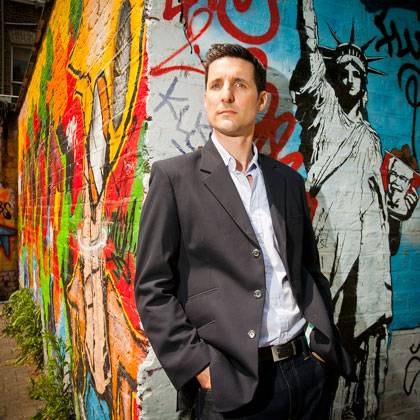
Question. How do we build a common life in places characterized by deep religious and cultural diversity?
Luke Bretherton: Building a common life between different faith groups and people of no faith without demanding everyone abandons what they cherish about their way of life is a challenging prospect. This challenge is particularly acute in urban contexts where state and market pressures are most intense. Another dimension of the problem is that different religions offer competing truth claims and forms of life that as a result of globalization and migration (and thence changing religious demographics) are increasingly jostled together.
There are three dangers to avoid in creating a genuinely plural and multi-faith public sphere. The first is co-option: for religious communities to be constructed by the modern state as just another interest group seeking a share of public money, or be instrumentalized to foster social cohesion and make up the deficiencies of the welfare state. The second is communalism: this entails religious communities framing who they are within the discourses of either multiculturalism, as just another cultural group in need of recognition, or within the discourse of rights, in which congregations are dissolved into a collective of individual rights bearers. The third is commodification: the re-construction of beliefs and practices as services to be consumed or commodities to be bought and sold in the religious market place.
The solution comes through forging meaningful inter-faith relations. A prominent proposal is that religious coexistence is achieved through dialogue and cohesion -- unity through emphasizing uniformity. Yet to have a real conversation, there needs to be respect for differences. Meaningful encounter entails crossing borders, not denying them; it means allowing for conflicts and conciliation. One of the best ways to forge these relationships and build a common life is to create opportunities for shared, inter-faith civic action that moves beyond humanitarian service provision and dialogue to joint political action. Religious groups collaborating together can be helpful mediators and advocates for individuals when negotiating for better governance and the just and generous distribution of resources. Recent examples of this kind of joint civic action in the US include broad-based community organizing, the "circle of protection" to safeguard public spending for the most needy, and the sanctuary, fair trade and immigration reform movements. In the UK the work of London Citizens exemplifies the vision of inter-faith relations as a civic practice. Its membership is made up of churches, mosques, synagogues, schools and unions who collaborate together to campaign on issues ranging from a living wage to safer streets.
One of the biggest barriers to this kind of joint civic action is a certain disdain and suspicion of religious involvement in public life by cultural, political and economic elites. Part of this stems from European and American notions of modernization, that as the world became increasingly modernized it would also become less religious. We realize now that things are a bit more complicated; belief and unbelief interact and constitute each other and they do so in different ways in different contexts. The form secularity takes in prisons is different to that in medicine and what it looks like in Egypt is different to what it looks like in Mexico or France. The reluctance to intermingle policy and religion follows the thinking that in not directly addressing any faith or religious tradition, a sort of equality can be achieved by keeping religion out of the public sphere. However, the paradox is that by religious groups getting together to contest the policies of corporations or governments through a shared commitment to the priority of social over political or economic life, they both build up a common life and enable a genuine plurality in the public sphere. Rather than being antagonistic, such action can contribute to democracy as a form of collective problem-solving and the need for collaborative governance that involves multiple stakeholders and sources of wisdom in addressing complex issues. Examples of this kind of initiative include the involvement of diverse religious groups in tackling issues as wide-ranging as restorative justice and urban housing.
For more about Bretherton, click here.